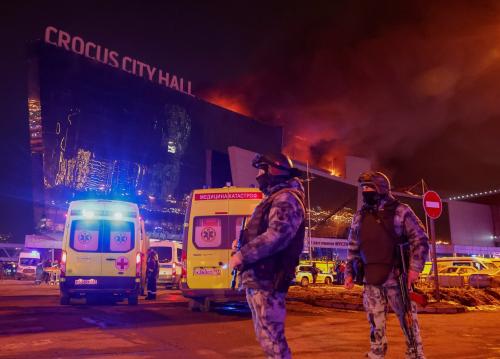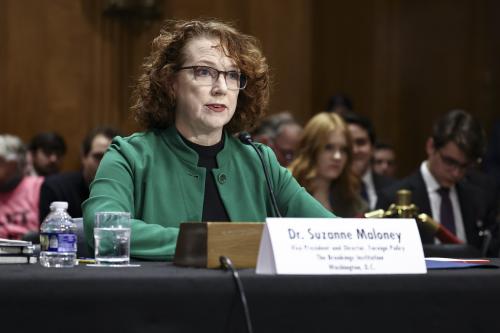It is absolutely critical we find out who committed mass murder in Mumbai. Beyond seeking justice, we need to know who ordered, planned, and executed this terrorist operation, for the answer might profoundly change how we think about global jihadist terrorism and how we fight it. Let’s just hope Mumbai does not herald a new chapter in our war against global jihadist terrorism.
Too many questions and uncertainties surround the terrorist attacks of Mumbai. India is still in a state of shock and it will take a while before its intelligence services are able to draw together a clear picture of the deadliest terrorist attack in the country’s history. One captured terrorist’s story is simply not enough.
This was not an operation of a local terrorist group no matter how high its determination or how severe its grievances may be against the Indian official establishment. India’s leaders are convinced—and American intelligence officials reportedly concur—that there was involvement by Pakistani terrorist elements in the attack. Specifically, they blame Lashkar-e-Taiba (LeT), which along with Jaish-e-Mohammad was one of the two most dangerous militant groups set up with the connivance and assistance of Pakistan’s military-intelligence outfit, Inter-Services Intelligence (ISI), to help wage an insurgency against Indian rule in the part of Kashmir it controls. These groups (or elements within these groups) are now allied with al Qaeda along the Afghan-Pakistani frontier. They are alleged to have been behind—or at least lent a helping hand in—a series of bloody attacks on India: the attempt in 2001 to kill India’s leaders in a raid on Parliament in Delhi; the bombing in 2003 of parts of Mumbai, including the Taj Mahal hotel, a target in the latest attack; and the even bigger slaughter entailed in the coordinated bombing of Mumbai’s commuter-rail network in July 2006.
We should not be surprised if al Qaeda was behind the Mumbai attacks. The attack had all the hallmarks of an al Qaeda operation: the hunt by the determined gunmen specifically for American, British, and Jewish victims smacks more of an al Qaeda agenda than that of a band of militants dabbling in the politics of Kashmir. An operation that would torpedo rapprochement between India and Pakistan, and maybe draw Pakistani soldiers away from hunting down al Qaeda and Taliban elements along the Afghan border, would surely win the approval of Osama bin Laden. Interrogation of the sole known survivor of the smaller attack group also suggests that the militants were youthful foot soldiers who must have been trained and directed and supported by more sophisticated officers. This was an operation long in the planning that required reconnaissance, training, money, and excellent communications.
But while most terrorism analysts and counterterrorism officials seem to be focused on the very likely al Qaeda link, nobody seems to have paid attention to the scary alternative. What if al Qaeda had no hand in this? If the investigations eventually reveal that the Mumbai attacks are not operationally linked to western Pakistan where al Qaeda’s central leadership resides, doesn’t this speak volumes about the future of global jihadist terrorism? Since 9/11, we have reasoned that only al Qaeda is capable of perpetrating catastrophic terrorism of global implications. Mumbai could profoundly challenge that assumption. We may be dealing with a new monster in the form of very capable terrorist groups that could pull off spectacular terrorist attacks without any direct material assistance from Osama bin Laden or Ayman al Zawahri (some people would argue that this “self-starters” trend started four years ago with the train bombings in Madrid, when Spanish intelligence services could not prove their linkage to al Qaeda). Indeed, Mumbai could reveal that the LeT, the primary suspect in the attack who is officially banned in Pakistan, is an independent terrorism threat. If so, American and European intelligence agencies now have two groups with international reach and serious terrorist potential to worry about: al Qaeda and LeT (according to the US National Counterterrorism Center and several American and European intelligence agencies, LeT has cells in the United Kingdom, Iraq, the Gulf, India, Afghanistan and Pakistan).
If this is the case, is the safe haven of al Qaeda in the tribal areas as critical as we thought it was (we all know it is relevant, but how critical)? This resurrects the important and much publicized debate between Marc Sageman, ex-CIA case officer and author of Leaderless Jihad, and Bruce Hoffman, terrorism scholar and author of Inside Terrorism, who offer contrasting assessments of the state of al Qaeda and the roots of jihadist terrorism. The two essentially feud over whether al Qaeda is a leaderless movement (Sageman) or a terrorist organization whose safe haven in western Pakistan is critical for its survival and lethality (Hoffman).
We usually dread the day when Osama bin Laden or Ayman al Zawahiri releases a message to assess their “state of the Islamic union”. This time, however, we might be getting some awkward sense of relief if either of these two leaders publicly praises the Mumbai attack and claims responsibility. There is nothing scarier than the thought of fighting powerful, global terrorists whose leadership is a mystery. In the business of counterterrorism, spectacular and catastrophic terrorism has to have an address.



Commentary
Op-edWhat We Fear Most about the Mumbai Attacks
December 8, 2008